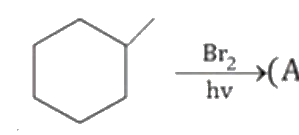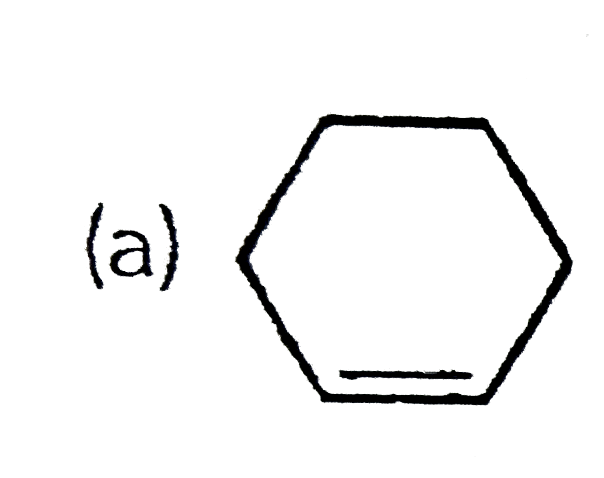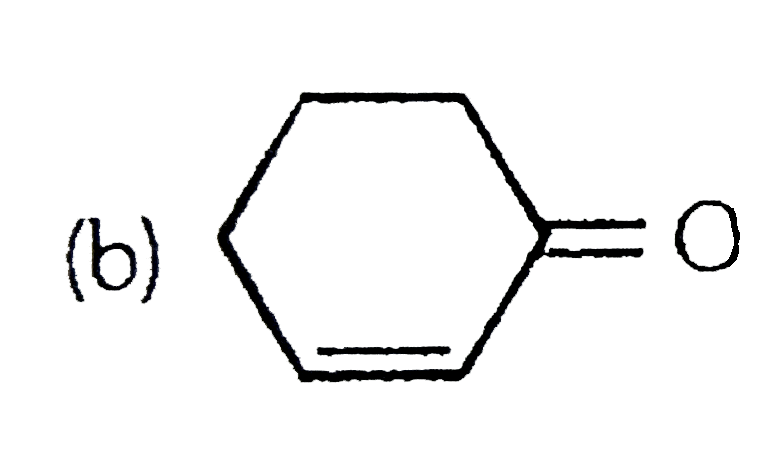Using the following Latimer diagram for bromine,
pH=0,BrO−41.82V−−→BrO−31.50V−−→HBrO1.595V−−−→Br21.06552V−−−−→Br−
the species undergoing disproportionation is
BrO−4
BrO−3
HBrO
Br2
The correct Answer is:C
To determine which species undergoes disproportionation using the provided Latimer diagram for bromine, we will follow these steps:
Step 1: Understand the Latimer Diagram
The Latimer diagram shows the reduction potentials for different oxidation states of bromine. The species listed are:
- BrO−4 (oxidation state +7)
- BrO−3 (oxidation state +5)
- HBrO (oxidation state +1)
- Br2 (oxidation state 0)
- Br− (oxidation state -1)
Step 2: Identify the Reduction Potentials
The reduction potentials given in the diagram are:
- BrO−4 to BrO−3: 1.82 V
- BrO−3 to HBrO: 1.50 V
- HBrO to Br2: 1.595 V
- Br2 to Br−: 1.06552 V
Step 3: Determine Oxidation States
Calculate the oxidation states for each species:
- For BrO−4: Let x be the oxidation state of Br.
x+4(−2)=−1⟹x−8=−1⟹x=+7
- For BrO−3:
x+3(−2)=−1⟹x−6=−1⟹x=+5
- For HBrO:
x+1(−2)+1=0⟹x−2+1=0⟹x=+1
- For Br2:
Oxidation state=0
- For Br−:
Oxidation state=−1
Step 4: Analyze Disproportionation
Disproportionation occurs when a species can simultaneously be oxidized and reduced. We will check each species:
- BrO−4: Can be reduced to BrO−3 but does not undergo disproportionation.
- BrO−3: Can be reduced to HBrO but does not undergo disproportionation.
- HBrO: The potential to the left (1.50 V) is less than the potential to the right (1.595 V). This indicates that HBrO can be both reduced to Br2 and oxidized to BrO−3, thus it undergoes disproportionation.
- Br2: Can be reduced to Br− but does not undergo disproportionation.
Conclusion
The species that undergoes disproportionation is HBrO.
Final Answer
The species undergoing disproportionation is HBrO.
---
The Latimer diagram shows the reduction potentials for different oxidation states of bromine. The species listed are:
- BrO−4 (oxidation state +7)
- BrO−3 (oxidation state +5)
- HBrO (oxidation state +1)
- Br2 (oxidation state 0)
- Br− (oxidation state -1)
The reduction potentials given in the diagram are:
- BrO−4 to BrO−3: 1.82 V
- BrO−3 to HBrO: 1.50 V
- HBrO to Br2: 1.595 V
- Br2 to Br−: 1.06552 V
Calculate the oxidation states for each species:
- For BrO−4: Let x be the oxidation state of Br.
x+4(−2)=−1⟹x−8=−1⟹x=+7
- For BrO−3:
x+3(−2)=−1⟹x−6=−1⟹x=+5
- For HBrO:
x+1(−2)+1=0⟹x−2+1=0⟹x=+1
- For Br2:
Oxidation state=0
- For Br−:
Oxidation state=−1
Disproportionation occurs when a species can simultaneously be oxidized and reduced. We will check each species:
- BrO−4: Can be reduced to BrO−3 but does not undergo disproportionation.
- BrO−3: Can be reduced to HBrO but does not undergo disproportionation.
- HBrO: The potential to the left (1.50 V) is less than the potential to the right (1.595 V). This indicates that HBrO can be both reduced to Br2 and oxidized to BrO−3, thus it undergoes disproportionation.
- Br2: Can be reduced to Br− but does not undergo disproportionation.
The species that undergoes disproportionation is HBrO.
The species undergoing disproportionation is HBrO.
Topper's Solved these Questions
- BOOK - NCERT FINGERTPS ENGLISHCHAPTER - REDOX REACTIONSEXERCISE - NCERT EXEMPLAR PROBLEMS11videos
REDOX REACTIONS
- BOOK - NCERT FINGERTPS ENGLISHCHAPTER - REDOX REACTIONSEXERCISE - ASSERTION & REASON15videos
REDOX REACTIONS
- BOOK - NCERT FINGERTPS ENGLISHCHAPTER - REDOX REACTIONSEXERCISE - MCQs (REDOX REACTIONS AND ELECTRODE PROCESSES)22videos
REDOX REACTIONS
- BOOK - NCERT FINGERTPS ENGLISHCHAPTER - PRACTICE PAPER 3EXERCISE - Practice Paper 346videos
PRACTICE PAPER 3
- BOOK - NCERT FINGERTPS ENGLISHCHAPTER - SOME BASIC CONCEPTS OF CHEMISTRY EXERCISE - NCERT Exemplar11videos
SOME BASIC CONCEPTS OF CHEMISTRY
Similar Questions
C2H4Br2−−→XKCN−−→Y,Y is
View Solution Br2−−→hv(A)alc. KOH−−−−→(B)OsO4−−→(C)HlO4−−→(D), Identify 'D'View Solution
Br2−−→hv(A)alc. KOH−−−−→(B)OsO4−−→(C)HlO4−−→(D), Identify 'D'View SolutionFind out the compounds that will disproportionate in their aqueous solution.
(I)ClO−4overst(+0.36V)→ClO−3+0.33V−−−−→ClO2+0.66V−−−−→OCl−+0.40V−−−−→12Cl2+1.36−−−→Cl−
(II)MnO−4+0.56−−−→MnO2−4+2.22V−−−−→MnO2+0.95V−−−−→Mn3++1.55−−−→Mn2+(−0.19)V−−−−−−→MnView SolutionSiCl4H2O−−→(A)Heat−−→(B)Na2CO3−−−−→Heat(C),
The compound (C ) isView SolutionIdentify A to G in the following.
(a) Br2,CCl4−−−−−→AKCN−−→BH3O+−−−→C
Br2,CCl4−−−−−→AKCN−−→BH3O+−−−→C
(b) Br2,CCl4−−−−−→DKCN−−→EH3O+−−−→GView Solution
Br2,CCl4−−−−−→DKCN−−→EH3O+−−−→GView SolutionCH3CH=CH2NBS−−→AKCN−−→BOH−/Δ−−−−−→CP/Br2−−−→DNH3−−→EΔ−−→F
View SolutionGiven the standard oxidation potentials
Fe+0.4V−−−→Fe2+(aq.)−0.8V−−−→Fe3+(aq.)
Fe+0.9V−−−→Fe(OH)20.6V−−→Fe(OH)3
It is easier to oxidise Fe^(2+) " to " Fe^(3+)inView Solution
(1)Cl2/U.V.−−−−−−−−−−−→(2)aq.KOHA50%NaOH−−−−−−→B
The correct statement regarding B is -View SolutionIn the following sequence of reactions,
CH3CH2CH2BrKOH(Alc)−−−−−−→ (A) HBr−−→ (B) KOH(aq)−−−−−→ (C ) The product (C) isView Solution[P]Br2−−→C2H4Br2NaNH2−−−−→Q20%H2SO4−−−−−−→RZnHg/HCl−−−−−−→S
The species P, Q, R and S respectively areView Solution

